Research team
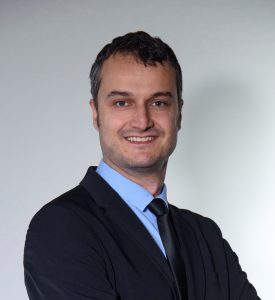
Assoc. prof. Mario Uroš
Project Leader
Mario Uroš works at the Faculty of Civil Engineering, University of Zagreb as an Associate Professor at the Department of Engineering Mechanics, Chair for Statics, Dynamics and Stability of Structures. He is actively involved in teaching of the university undergraduate and graduate programs at the in courses Mechanics II and Theory of Stability. In his scientific work he works in the wider field of numerical modeling, dynamics and stability of structures and earthquake engineering. He participates in many scientific projects in his field of research as a participant or leader. He is a member of the organizing and scientific committee of several scientific and professional international conferences and author of many relevant scientific and professional papers. He was involved in the implementation of European projects MATILDA for damage assessment and emergency measures after earthquakes and Interreg READINESS project in which he performs numerical calculations for buildings of strategic interest in the City of Dubrovnik and Split-Dalmatia County in case of a possible earthquake, in cooperation with the Faculty of Civil Engineering and the Faculty of Science. He has been one of the coordinators of rapid damage assessments of buildings by civil engineers after the earthquakes in Zagreb in March 2020 and Petrinja in December 2020 and a series of necessary community relief activities. He has won several awards, including the Medal of the City of Zagreb and the award of the Croatian Chamber of Civil Engineers “Kolos” in 2020 for his contribution to post-earthquake activities.
Marta Savor Novak is an assistant professor in the Department of Engineering Mechanics of Faculty of Civil Engineering University of Zagreb. Her research areas include earthquake engineering, structural dynamics and numerical modelling of structures. She is part of the team at the faculty that actively participates in various earthquake risk reduction activities at national and local level, in collaboration with relevant institutions such as the Ministry of Interior, the Ministry of Construction and Physical Planning and the Zagreb City Office of Emergency Management. Some of the related projects and activities include National disaster risk assessment in the Republic of Croatia – seismic risk (2014-2018), Study on earthquake risk reduction in the City of Zagreb (2013-2021), Analysis of seismic resistance of characteristic buildings in the City of Zagreb, the assessment of risk management capabilities, capacity assessment and strategies in cooperation with the National Protection and Rescue Directorate, etc. She took part in joint exercises with the Croatian Civil Protection Team MUSAR (e.g. Alessandria 2015 and Cascade19 Portugal). She actively participated in the organization of the system for assessing damage and usability of buildings after the 2020 Croatia earthquakes and in the development of a methodology for assessing damage and reconstruction costs (for the Government and for the World Bank). She was associate designer of more than 10 structural designs in collaboration with Croatian Industry. She is a licensed civil engineer and a member of the Croatian Chamber of Civil Engineers and the European Association for Earthquake Engineering – EAEE.
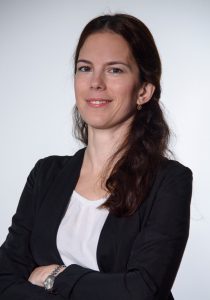
Assist. Prof. Marta Šavor Novak
Researcher

Assist. Prof. Marta Šavor Novak
Researcher
Marta Savor Novak is an assistant professor in the Department of Engineering Mechanics of Faculty of Civil Engineering University of Zagreb. Her research areas include earthquake engineering, structural dynamics and numerical modelling of structures. She is part of the team at the faculty that actively participates in various earthquake risk reduction activities at national and local level, in collaboration with relevant institutions such as the Ministry of Interior, the Ministry of Construction and Physical Planning and the Zagreb City Office of Emergency Management. Some of the related projects and activities include National disaster risk assessment in the Republic of Croatia – seismic risk (2014-2018), Study on earthquake risk reduction in the City of Zagreb (2013-2021), Analysis of seismic resistance of characteristic buildings in the City of Zagreb, the assessment of risk management capabilities, capacity assessment and strategies in cooperation with the National Protection and Rescue Directorate, etc. She took part in joint exercises with the Croatian Civil Protection Team MUSAR (e.g. Alessandria 2015 and Cascade19 Portugal). She actively participated in the organization of the system for assessing damage and usability of buildings after the 2020 Croatia earthquakes and in the development of a methodology for assessing damage and reconstruction costs (for the Government and for the World Bank). She was associate designer of more than 10 structural designs in collaboration with Croatian Industry. She is a licensed civil engineer and a member of the Croatian Chamber of Civil Engineers and the European Association for Earthquake Engineering – EAEE.
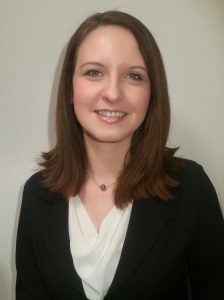
Assist. Prof. Marija Demšić
Researcher
Marija Demšić is an assistant professor in the Department of Engineering Mechanics of Faculty of Civil Engineering University of Zagreb. She actively participates in teaching the university undergraduate and graduate programmes in the courses Mathematical Programmes for Engineers, Mechanics II, and Structural Dynamics and Earthquake Engineering. Since 2020, she has been the faculty coordinator for the graduate programme Theory and Modelling of Structures. Her scientific interests include dynamics of structures, in particular nonlinear cable dynamics, earthquake engineering and numerical modelling of structures. She participated in the organisation and surveys for rapid damage assessment of buildings by civil engineers after the earthquakes in Zagreb in March 2020 and in Petrinja in December 2020, as well as in a number of necessary relief activities for the municipalities. For her efforts in the activities after the earthquake in Petrinja, she received the award of the Croatian Chamber of Civil Engineers “Kolos” in 2021.
Senad Medić is an assistant professor at the Faculty of Civil Engineering, University of Sarajevo. He teaches several undergraduate and graduate courses at the University, such as Concrete structures 1, 2 & 3, where he is a lecturer, and the course Modelling of structures on the tutorials. He participated in the project Seismic resistance of existing masonry buildings, supported by the Federal Ministry of Education and Science, (2016 in collaboration with ILEK, University of Stuttgart) and Erasmus + Capacity Building in Higher Education “Promoting academia-industry alliances for R&D through collaborative and open innovation platform” (2019 – 2021). His research includes advanced numerical computations with nonlinear static pushover and dynamic time- history analysis of masonry and RC structures, as well as experimental research on the behaviour of existing masonry and RC structures. He is a member of the Association of Civil Engineers in BH, the Central European Association for Computational Mechanics and the Technical Committee for the Implementation of the Eurocodes – Design of concrete and masonry structures (Institute for Standardisation of BH).
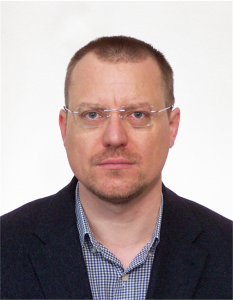
Assist. Prof. Senad Medić
Researcher

Assist. Prof. Senad Medić
Researcher
Senad Medić is an assistant professor at the Faculty of Civil Engineering, University of Sarajevo. He teaches several undergraduate and graduate courses at the University, such as Concrete structures 1, 2 & 3, where he is a lecturer, and the course Modelling of structures on the tutorials. He participated in the project Seismic resistance of existing masonry buildings, supported by the Federal Ministry of Education and Science, (2016 in collaboration with ILEK, University of Stuttgart) and Erasmus + Capacity Building in Higher Education “Promoting academia-industry alliances for R&D through collaborative and open innovation platform” (2019 – 2021). His research includes advanced numerical computations with nonlinear static pushover and dynamic time- history analysis of masonry and RC structures, as well as experimental research on the behaviour of existing masonry and RC structures. He is a member of the Association of Civil Engineers in BH, the Central European Association for Computational Mechanics and the Technical Committee for the Implementation of the Eurocodes – Design of concrete and masonry structures (Institute for Standardisation of BH).
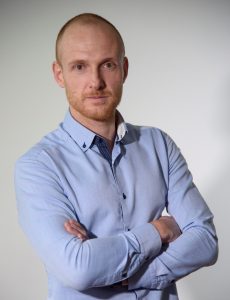
Janko Košćak
Researcher
Janko Košćak graduated from the Faculty of Civil Engineering in Zagreb in 2013 and currently works as a research and teaching assistant in the Structural Testing Laboratory in the Department of Engineering Mechanics at the Faculty of Civil Engineering, University of Zagreb. He participates in teaching tutorials in the university undergraduate and postgraduate courses Strength of Materials 1 & 2 and Structural Testing. Currently, he is in the final year of his PhD studies and is working on the preparation of his dissertation Shear in reinforced concrete: analysis and improvement of existing mechanical models based on refined experimental measurements. Besides the 2BeSafe project, he has participated or is currently active in other projects: Assessment and rehabilitation of existing structures – Development of contemporary methods for masonry and timber structures (ARES, 2020-present), Development of “DIV “elastic buckle (2018. – present), FP7 ANAGENNISI – Innovative Reuse of All Tyre Components in Concrete (2014. – 2017.).
Snježan Prevolnik graduated from the Faculty of Science, University of Zagreb in 2008. He works at the Croatian Seismological Survey at Department of Geophysics at the University of Zagreb since 2008. He is involved in all tasks related to testing and configuration of seismic equipment, configuration of computer and communication systems, construction and maintenance of a network of seismological and accelerographic stations, data processing, analysis and archiving, participation in permanent duty and readiness, implementation of scientific and professional projects and scientific research. In addition, he participates in teaching graduate studies at the Department of Geophysics in exercises on seismic anisotropy. In parallel with his work at SSH, he is enrolling in the postgraduate doctoral programme in physics in the field of geophysics and is currently in his final year of study. His research interests include seismic anisotropy, microzonation, and seismic hazards to buildings, as well as other areas of seismology. Besides the 2BeSafe project, he participates in the project Research of recent regional and local geodynamic processes in the Republic of Croatia using modern satellite geodetic methods (GEOMSAT, 2018-2022) and was a team member in the project VELEBIT top to bottom – multidisciplinary research linking seismological data and tectonics in the Mt. Velebit region (VELEBIT, 2014-2019), all projects funded by the Croatian Science Foundation. Furthermore he also parcicipated in other projects: READINESS (2018-2019), ALPARRAY (2015-2018), ALPARRAY-CASE (2016-2018), IPA projekt HOLISTIC Seismic and Wildfire Risks in Dubrovnik-Neretva County (2015), Nato SfP 984374 – Improvements in the Harmonized Seismic Hazard Maps for the Western Balkan Countries (2010-2013) and NATO SfP 983054 – Harmonization of seismic hazard maps for the western Balkan countries (BSHAP, 2007-2010).
Snježan Prevolnik
PhD student
Snježan Prevolnik
PhD student
Snježan Prevolnik graduated from the Faculty of Science, University of Zagreb in 2008. He works at the Croatian Seismological Survey at Department of Geophysics at the University of Zagreb since 2008. He is involved in all tasks related to testing and configuration of seismic equipment, configuration of computer and communication systems, construction and maintenance of a network of seismological and accelerographic stations, data processing, analysis and archiving, participation in permanent duty and readiness, implementation of scientific and professional projects and scientific research. In addition, he participates in teaching graduate studies at the Department of Geophysics in exercises on seismic anisotropy. In parallel with his work at SSH, he is enrolling in the postgraduate doctoral programme in physics in the field of geophysics and is currently in his final year of study. His research interests include seismic anisotropy, microzonation, and seismic hazards to buildings, as well as other areas of seismology. Besides the 2BeSafe project, he participates in the project Research of recent regional and local geodynamic processes in the Republic of Croatia using modern satellite geodetic methods (GEOMSAT, 2018-2022) and was a team member in the project VELEBIT top to bottom – multidisciplinary research linking seismological data and tectonics in the Mt. Velebit region (VELEBIT, 2014-2019), all projects funded by the Croatian Science Foundation. Furthermore he also parcicipated in other projects: READINESS (2018-2019), ALPARRAY (2015-2018), ALPARRAY-CASE (2016-2018), IPA projekt HOLISTIC Seismic and Wildfire Risks in Dubrovnik-Neretva County (2015), Nato SfP 984374 – Improvements in the Harmonized Seismic Hazard Maps for the Western Balkan Countries (2010-2013) and NATO SfP 983054 – Harmonization of seismic hazard maps for the western Balkan countries (BSHAP, 2007-2010).

Ante Pilipović
PhD student
Ante Pilipović studied at the Faculty of Civil Engineering in Zagreb and graduated in 2017 in the field of structural engineering. He currently works at the same Faculty of Civil Engineering, University of Zagreb, as an Assistant at the Department of Engineering Mechanics, Chair for Statics, Dynamics and Stability of Structures. He is a PhD student involved in the project New vulnerability models of typical buildings in urban areas: applications to seismic risk assessment and target retrofitting methodology under the mentorship of professor Mario Uroš. In his scientific work he is involved in the wider field of numerical modelling, dynamics and stability of structures and earthquake engineering, especially the area of seismic hazard, bridging the interdisciplinary gap towards seismology. He was a member of the Croatian team for post-earthquake damage assessment mobilized through Civil Protection of the Ministry of the Interior on a relief and support mission in Albania after an earthquake in 2019 caused significant damage to the city of Durres and the surrounding area. He has participated in making rapid damage assessments of damaged buildings in Zagreb after the earthquake in march 2020 and in Petrinja after the earthquake in December 2020. He was involved as a structural engineer in the international European Civil Protection exercise SI QUAKE 2020 held in Slovenia in 2021 where he participated as part of the Croatian MUSAR team in search and rescue operations in an advisory capacity regarding building approach safety and local structural reinforcement.
Romano Jevtić Rundek is a fresh graduate of Civil engineering, graduated in July 2021, in the field of structural engineering. Currently working at Faculty of Civil Engineering, University of Zagreb, on the project 2BESAFE-New vulnerability models of typical buildings in urban areas: applications to seismic risk assessment and target retrofitting methodology under the mentorship of professor Mario Uroš. His main interest is studying the behaviour of structures under static and dynamic loading. Both his thesis for bachelor and for masters degree were aimed at assessment of building behaviour under seismic loading. Through the next 4 years working on the 2BESAFE project he will refine his understanding of structure behaviour under static and dynamic loads, and understanding of different methods used to estimate the structure behaviour.

Romano Jevtić Rundek
PhD student
Romano Jevtić Rundek
PhD student
Romano Jevtić Rundek is a fresh graduate of Civil engineering, graduated in July 2021, in the field of structural engineering. Currently working at Faculty of Civil Engineering, University of Zagreb, on the project 2BESAFE-New vulnerability models of typical buildings in urban areas: applications to seismic risk assessment and target retrofitting methodology under the mentorship of professor Mario Uroš. His main interest is studying the behaviour of structures under static and dynamic loading. Both his thesis for bachelor and for masters degree were aimed at assessment of building behaviour under seismic loading. Through the next 4 years working on the 2BESAFE project he will refine his understanding of structure behaviour under static and dynamic loads, and understanding of different methods used to estimate the structure behaviour.
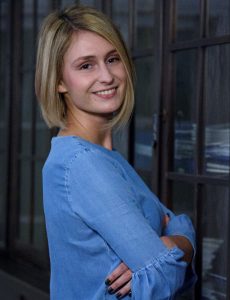
Tea Žagar
PhD student
Tea Žagar graduated from the Faculty of Civil Engineering, University of Zagreb in 2019. During the last year of her studies, she participated in the preparation of a disaster risk assessment study for the Republic of Croatia with the scenario: earthquake in the city of Zagreb. Since 2019, she has been working as an assistant in the courses Structural Analysis 1, Mechanics 1 & 2 at the Faculty of Civil Engineering, University of Zagreb. Since July 2021, she has been working at the Croatian Center for Earthquake Engineering at the Faculty of Civil Engineering as an assistant researcher. Currently, in addition to participating in the 2BeSafe project, she is also working on the projects “Complete Reconstruction Program of the Historic Core of the City of Zagreb” and “Earthquake Risk of the City of Zagreb” funded by the European Union from the European Regional Development Fund.
